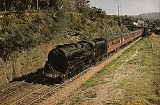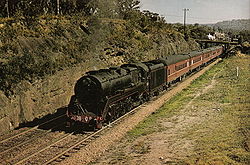
Fassifern, New South Wales
Encyclopedia

New South Wales
New South Wales is a state of :Australia, located in the east of the country. It is bordered by Queensland, Victoria and South Australia to the north, south and west respectively. To the east, the state is bordered by the Tasman Sea, which forms part of the Pacific Ocean. New South Wales...
, Australia
Australia
Australia , officially the Commonwealth of Australia, is a country in the Southern Hemisphere comprising the mainland of the Australian continent, the island of Tasmania, and numerous smaller islands in the Indian and Pacific Oceans. It is the world's sixth-largest country by total area...
, located west of Lake Macquarie
Lake Macquarie (New South Wales)
Lake Macquarie is Australia's largest coastal salt water lake, covering an area of in the Hunter Region of New South Wales with most of the City of Lake Macquarie's residents living near its shores. It is connected to the Tasman Sea by a short channel. Lake Macquarie is twice as large as Sydney...
.
The Sydney-Newcastle railway line runs through Fassifern railway station, which is a major station along the line. There used to be a branch line between Fassifern Station and nearby Toronto
Toronto, New South Wales
Toronto is a town within the city of Lake Macquarie in New South Wales, Australia, approximately from Newcastle's central business district and is a commercial hub for the sprawling suburbs on the western shore of the lake.-History:...
, but this has been replaced by a bus service, aptly named "The Train".
History
Fassifern was first developed as a result of sawmill and coal mining operations in the area. The railway station opened in 1887. The first school, Fassifern Public School, was opened in 1922.From the late 19th century the Croft family's Northumberland Coal Company operated the Northumberland Colliery, within walking distance from the railway station and to where a rail spur extended. This company operated several subsidiary coal companies. Further up the main line they had another colliery, Olstan, now long closed. In 1950 Northumberland Colliery was renamed Newstan Colliery and leased out to the NSW Electricity Commission, and is still in operation to this day. The collieries were named after Mr Stanley Croft, an early proprietor and manager of the coal company. The mine is a source for some of the local jobs in Fassifern and the surrounding suburbs.
Recently Charlton Christian College (the name was changed from Lake Macquarie Christian College, reportedly to avoid confusion from Macquarie College
Macquarie College
Macquarie College is a private primary and secondary school located in Newcastle, New South Wales, Australia. It is part of the Seventh-day Adventist Church's worldwide educational system.- History :...
) was established. It operates alongside the still existing public school.
Location
Fassifern is located on the western side of Lake MacquarieLake Macquarie (New South Wales)
Lake Macquarie is Australia's largest coastal salt water lake, covering an area of in the Hunter Region of New South Wales with most of the City of Lake Macquarie's residents living near its shores. It is connected to the Tasman Sea by a short channel. Lake Macquarie is twice as large as Sydney...
in Fennell Bay, a small bay with mangrove
Mangrove
Mangroves are various kinds of trees up to medium height and shrubs that grow in saline coastal sediment habitats in the tropics and subtropics – mainly between latitudes N and S...
and she-oak trees on its shores. Some petrified wood
Petrified wood
Petrified wood is the name given to a special type of fossilized remains of terrestrial vegetation. It is the result of a tree having turned completely into stone by the process of permineralization...
exists in a part of the bay, which is said to be the remains of a petrified forest (many pieces of the wood have been taken).
Fassifern also contains vast amounts of native bushland to the north and west.
Education
- Fassifern Public School (public, K-6)
- Charlton Christian College (private Christian, K-12)

